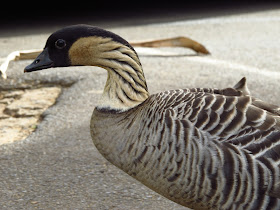Let's start with some statistics. In 2015 we blogged 49 blogs (coming in at just 1 under last year's 50, keeping our rate of 1 almost every week of the year). The blog has gotten more popular too. Although nothing seems to be capable of taking down
That Flappy Bird Post as most clicked, we had our second brush with 'virality' this year when we
co-started the #WorstBirdPic hashtag on twitter. Karl Mechem, @TheIneptBirder (funny bird person and overall great-seeming guy) even
interviewed your intrepid blogger for the Audubon website. It was a trip. Even more interestingly it happened entirely outside of the confines of this website, on 'The Twitter'. I'm not nearly as active on it as I should be, but I am managing to Social Media, at least to some degree. We also started delving into
Etymology a little bit and visited some great bird locations (look for Hawaii birds starting very soon!).

On the more negative side of things, I was unable to get a photo accepted for the Golden Gate Audubon Society Bird Calendar this year. I guess I had assumed it would be not that unlikely that I get in again, since I was
chosen the first time I submitted. I have high hopes for some of my pictures this year. Also disappointing- I failed in
literally every one of my birding resolutions. I gave an honest shot to finding a golden eagle, a condor, a painted bunting, and went out of my way for owls several times (I actually half way completed this one, since I did see
one new owl, and several others in captivity [DOES NOT COUNT]). And I just straight up missed the window of opportunity to go to the Farrallons this year.

Still, we accomplished a lot. In today's blog I'm going to highlight some of my favorite moments from the last year.
BIRDING HIGHLIGHTS 2015
Ridgeway's Rail A great image of a rare and endangered bird. I thought this one would be a shoe-in for a calendar for sure. Another great endangered bird we got was the
Snowy Plover. This one has a double bonus of having both a funny .gif and a super cute baby bird. I also think the
Pygmy Nuthatch image was a real standout.
Rest in Peace California Towhee A truly sad bird blog post. Rarely do we flirt with anything like serious emotions on this blog, so it's notable when we do.
Bird Relationship Status Update I enjoyed the short bird fiction style I was able to come up with for this one, and I like that it was a timely, holiday-related blog. We can all learn a little something from birds and their love lives. The
Baby Birds of New York City entry took a similar format.
Red-tailed Hawk The story of the Red-tailed Hawk's cry is one of the most endearingly interesting and quirky anecdotes in birding, and I'm glad I was able to get it down on the blog in somewhat competent fashion. It's a decent pic too. Also in 'interesting stories', we got to talk a little bit about convergent bird evolution in our
Spotted Towhee blog. A good, quick read.
Both
Belted Kingfisher and
Roseate Spoonbill are just super cool looking birds that I got real good pictures of. Good job, me.
I always enjoy the .gif entries, and kept going with my
Life of Birds series. However, my favorite moving images this year might have come from the
Spooky Halloween Bird Gifs article. This is mostly new territory for me, but look for more stuff like it in the future. The best individual .gif, however, might've been in a
mystery bird entry.. You be the judge.
Our most popular blog of the year was
The Roosters of Key West. Again, an interesting story, and I'm always glad to blog about domestic birds. Along the same notes, I got to continue with one of my favorite rarely recurring features, Bird Reviews with
African Goose (he is not a popular goose).
We'll wrap with some birding resolutions. It seems like wishing for specific birds is wishing for disaster, so I won't go there. Instead, let's try these-
1. Submit photos to more calendars and contests
2. Become more active on social media
3. Write more timely blogs that tie into current events. This was a plan I've always had, and occasionally remember to do (see
The Bird Cup,
The National Birding Championship), but have fallen down on somewhat this year.
4. Remember to go to those damn Farrallons
And of course
5. Continue to produce great weekly content for this here bird blog. Happy New Year everyone, and keep on birdin' in the free world.






















